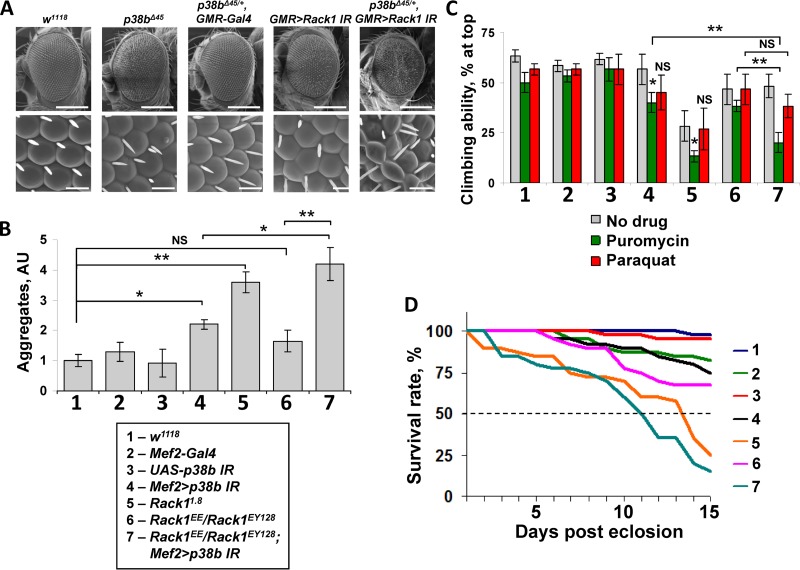FIG 6.
Rack1 and p38b genetically interact to control myoproteostasis, locomotor function, and life-span. (A) Eye phenotypes of animals carrying p38b and Rack1 alleles were documented by scanning electron microscopy. Top row, ×150 magnification, 200-μm scale bar. Bottom row, ×2,000 magnification, 15-μm scale bar. Smaller rough eyes are observed when an eye-specific knockdown of Rack1 (GMR>Rack1 IR) is combined with a heterozygous p38b-null allele (p38bΔ45). (B) Thoracic aggregate deposition is largely unaffected in a Rack1 hypomorphic background (Rack1EE/Rack1EY128) compared to wild-type control. However, aggregate formation is strongly potentiated by combining these Rack1 alleles with a p38b knockdown (Mef2>p38b IR). Aggregate levels were measured by dot blot in thoracic extracts from 3-day-old flies (see Materials and Methods). (C) Three-day-old flies were fed paraquat or puromycin, and subjected to a simple negative geotaxis assay. Genetic interaction of Rack1EE/Rack1EY128 and Mef2>p38b IR greatly reduces locomotor function under proteotoxic stress. In panels B and C, columns represent means ± the SD (n = 3; NS, not significant; *, P < 0.05; **, P < 0.01 [unpaired two-tailed Student t test]). (D) Life-span was evaluated in flies of indicated genotypes by scoring survival under normal conditions (25°C, unsupplemented food) over a period of 15 days. Dashed line indicates median survival. A markedly decreased life-span is observed in Rack1EE/Rack1EY128; Mef2>p38b IR flies.

